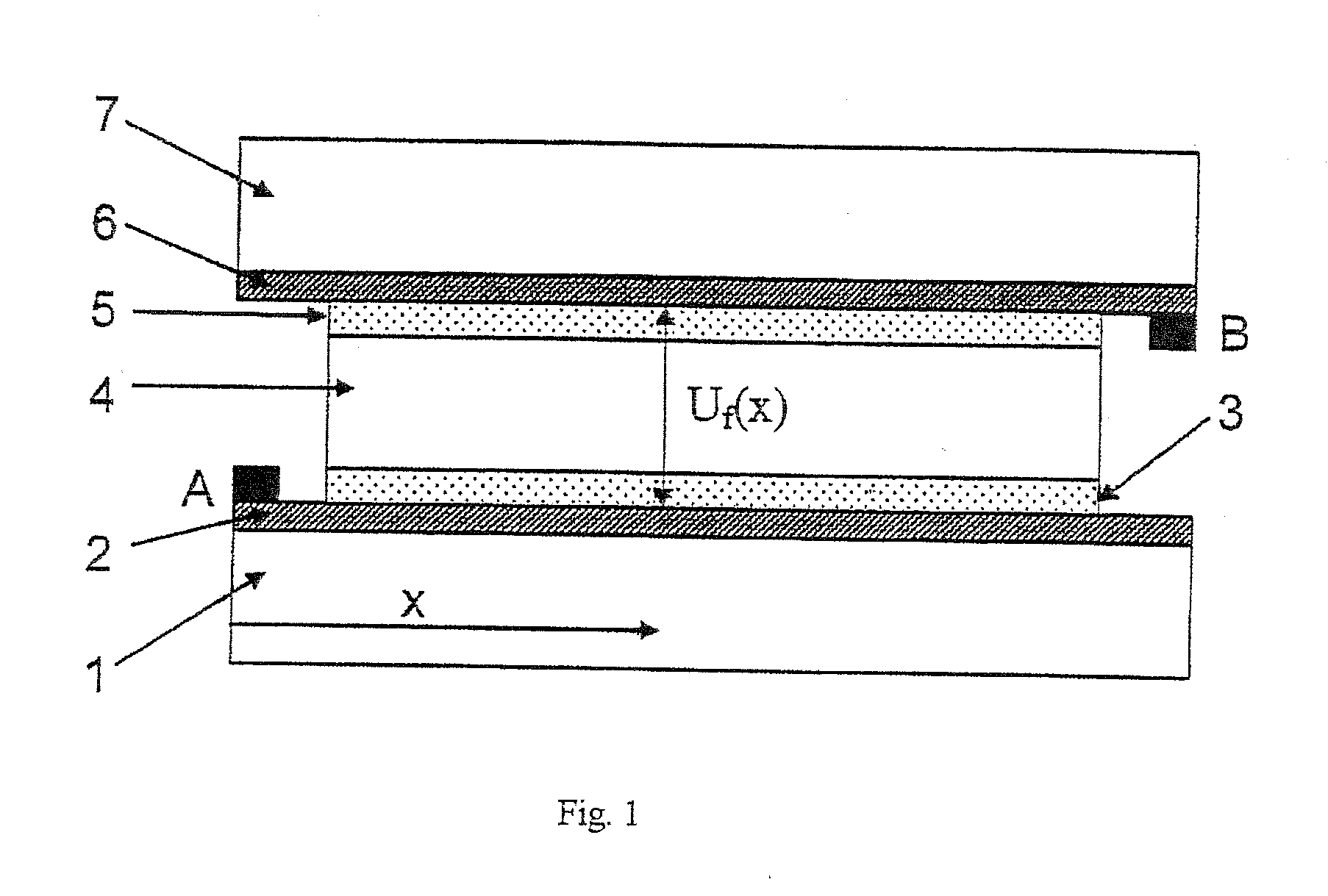Process and apparatus for switching large-area electrochromic devices
a technology of electrochromic devices and process, applied in the direction of optics, non-linear optics, instruments, etc., can solve the problem that it is normally not possible to measure the potential difference between the electrode layers directly, and achieve the effects of limiting cell current, maximum lifetime, and optimizing transmission homogeneity
- Summary
- Abstract
- Description
- Claims
- Application Information
AI Technical Summary
Benefits of technology
Problems solved by technology
Method used
Image
Examples
examples
[0063]The invention will be further explained using as example the switching of a 40×80 cm2 electrochromic device, from a completely bleached to coloured state. Before switching begins, the relevant parameters are saved in the memory of the controller. The relevant parameters are as follows:[0064]1. Electrochromic device height (length of contacted edges)=40 cm[0065]2. Electrochromic device width (length of non-contacted edges)=80 cm[0066]3. Resistance constant for electrode layers (k)=10 Ohm[0067]4. Maximum current density (jmax)=33.3 μA / cm2, as calculated according
jmax=(QmaxTime)=20600smCcm2=33,3μAcm2,[0068]where (Qmax) is the maximum charge density corresponding to the completely coloured state and (Time) is the desired switching time.[0069]5. The maximum current (imax) is calculated according to
imax=(j×Area)+(T-T0)×F=(33,3μAcm2×3200cm2)+(T-T0)×F=107mA,[0070]assuming F=0 in this example, for sake of simplicity.[0071]6. Safe coloration potential limit (Uec, col)=+3.00 V at 0° C.[0...
PUM
| Property | Measurement | Unit |
|---|---|---|
| temperatures | aaaaa | aaaaa |
| temperatures | aaaaa | aaaaa |
| area | aaaaa | aaaaa |
Abstract
Description
Claims
Application Information
 Login to View More
Login to View More - R&D
- Intellectual Property
- Life Sciences
- Materials
- Tech Scout
- Unparalleled Data Quality
- Higher Quality Content
- 60% Fewer Hallucinations
Browse by: Latest US Patents, China's latest patents, Technical Efficacy Thesaurus, Application Domain, Technology Topic, Popular Technical Reports.
© 2025 PatSnap. All rights reserved.Legal|Privacy policy|Modern Slavery Act Transparency Statement|Sitemap|About US| Contact US: help@patsnap.com



